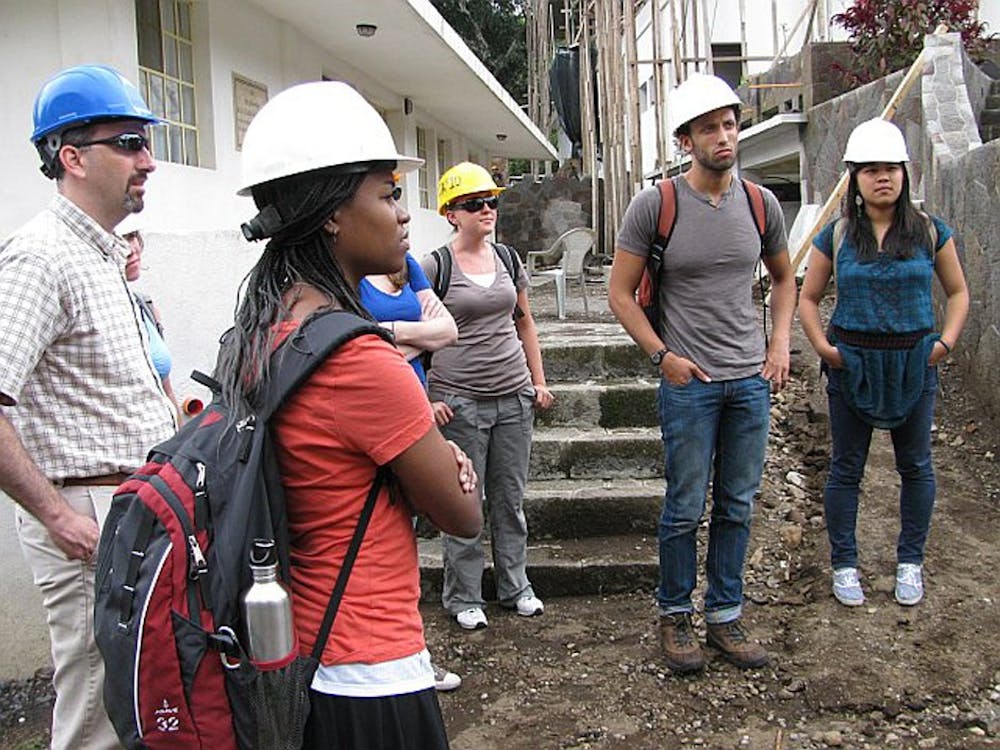Tucked away in the highlands of Guatemala near the southern shore of Lake Atitlan lies Hospitalito Atitlan. Isolated in the rural Mayan community of Santiago Atitlan, it is the only hospital to provide 24/7 emergency care for hundreds of miles.
But soon, Penn will become part of a global network — with a click of a button on their smartphone, doctors can snap a photo of a skin disease or X-ray, add information about the patient and send it to an expert at Penn for a second opinion.
This new technology is part of an initiative by Penn Libraries and the Penn-Guatemala partnership to bring “telemedicine” technologies and medical information to Guatemala through a $26,000 grant they received from the Elsevier Foundation.
“It really will enhance patient care for a population that has limited access,” said Charles Branas, a professor of Epidemiology at Penn and co-director of the Penn-Guatemala partnership.
“Not just the photos that will be transferred by the phones but also the information that will be transferred in terms of the advice being given in real time — and that’s a very big deal.”
The initiative in Guatemala is an extension of a similar project that was implemented by Penn Libraries in Botswana in 2008. Due to the success of this program, Penn Libraries applied for another grant to develop a similar project in Guatemala.
In June, Penn faculty members will travel to Guatemala to conduct their initial assessment for implementing the new technology. During the trip, they will bring one or two phones to see how they are received by the doctors in addition to identifying the specific technological needs of the area and the available infrastructure.
Guatemala may present different challenges than Botswana because of the language barrier, associate director of the Penn Biomedical Library Anne Seymour said. They need to see what information is available in Spanish and what languages the doctors and clinicians speak. Additionally, more than 60 percent of the local population speaks only the Mayan dialect Tz’utujil.
Another major aspect of the project is enhancing availability to medical information.
Through access to a cellular network, clinicians can connect to other databases and read full text articles on PubMed, a database of premier medical literature.
“We think this is not just a clinical tool but also an educational tool,” Seymour said. She explained that in Botswana many doctors were using the phones not only for access to quick information at the bedside but also to later read full articles.
Branas also emphasized the importance of expanding the library facilities. “We hope it that it’s going to go beyond health,” he said, explaining that a future goal will be to connect the Penn Library database with the library of la Universidad Francisco Marroquin in Guatemala City where information can then spread across disciplines.
After successfully implementing the telemedicine technology, the next big issue becomes sustainability and forming partnerships with people in the country, explained Seymour. Kent Bream, an assistant professor of Clinical Family Medicine and the founding faculty director of the Penn Guatemala Health Initiative, has already began to explore the possibility of partnerships with different institutions, including the government.
Although everything developed in these programs may not translate across different cultural boundaries, they are “working to demonstrate and test that this model can be used elsewhere,” Seymour said.
Mobile health is currently “one of the hottest areas in healthcare worldwide,” she added.



